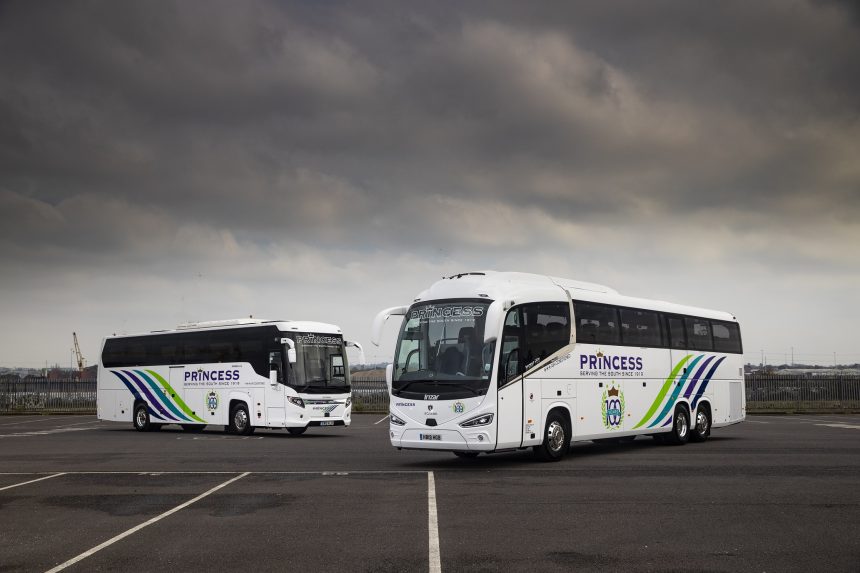Underway quietly of late has been overhaul of the Scania coach and bus business in the UK. That work is now largely focussed on vehicle advancements. But hardware evolution sits alongside changes to a support function that Sales Director Mark Oliver says majors on enhancing the overall customer experience.
Mark took on leadership of coach and bus for Scania in the UK during 2022. He works closely with a team that includes General Manager Used Bus and Coach Steve Lambert and Sales Engineer Bus and Coach Paul Chapman. Between them, the trio will in May have a cumulative 100 years’ service to the brand, but they are as thirsty as ever to see its UK presence advance.
From a vehicle perspective, Scania expects to grow its coach offering in the UK. Zero-emission is slated to debut globally in that segment in around two years, and nascent experience with battery-electric in truck gives a strong indication that it will work well as part of a mix of driveline technologies for coach.
In the Fencer bus, zero-emission for Scania has been slower in coming than for other manufacturers, but that is for a reason: Mark and team have held back until the next generation of driveline, including battery cells from Northvolt, arrives. The first battery-electric Fencer is due here around the turn of 2025.
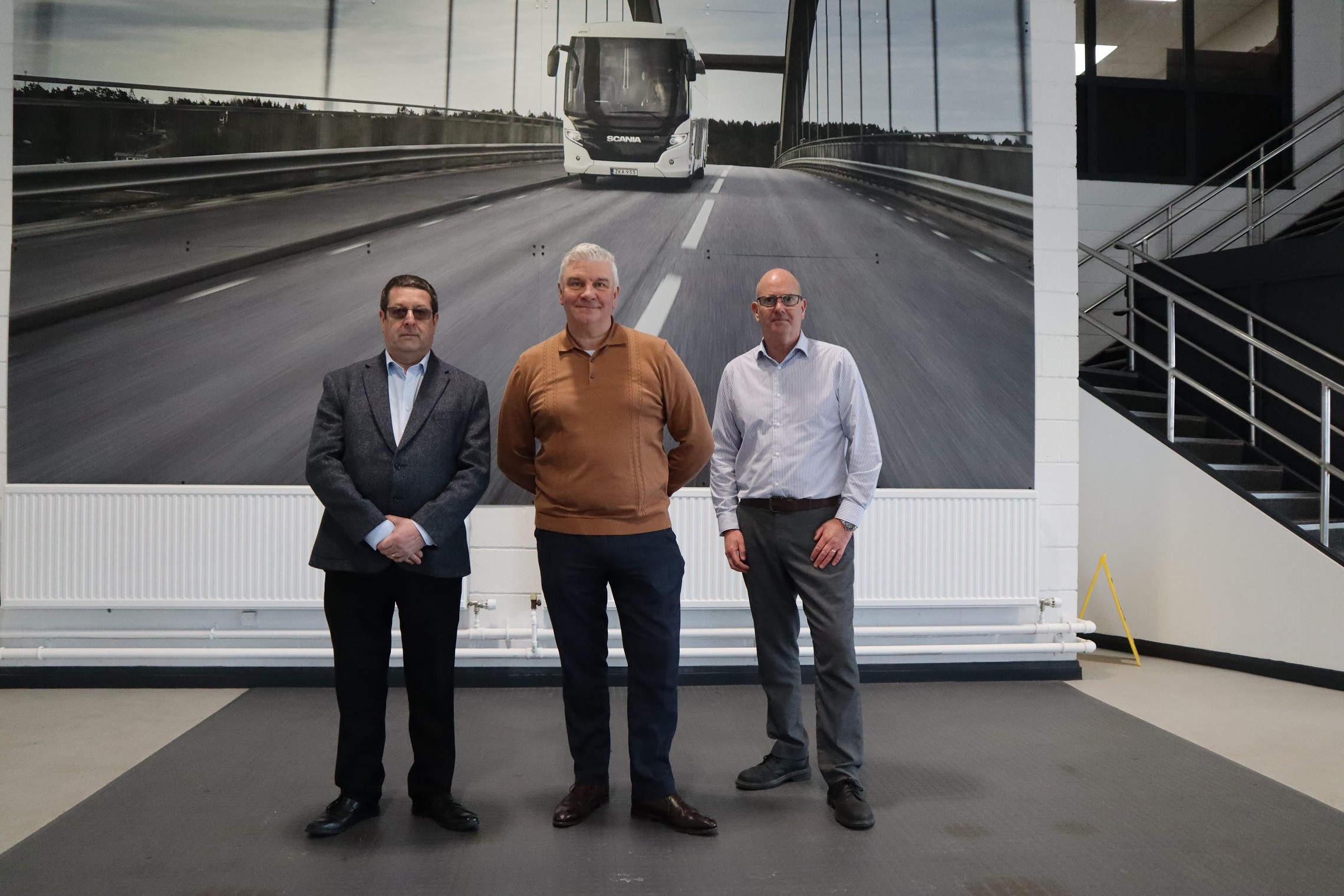
Much else is to be said about product development, and Scania is leveraging its core driveline skills in working with bodybuilders and dealer partners. Mark notes that vertical integration of chassis components has protected Scania from the worst of supply chain interruptions, while an upgrade of connected services including telematics complements the centrepiece of its UK-centric coach and bus development: Change at the ‘mothership’ premises in Worksop.
Handover process is a key to Scania coach and bus future in UK
Those efforts began when Scania considered the Worksop site and what is coming for the wider coach and bus business, and how best to support both. What Mark calls “huge investment” has gone into Worksop, which is now a national pre-delivery inspection (PDI) centre. While that sounds sterile, it also houses used stock – although little is present owing to strong second-hand demand – and significant workshop, parts, office and parking space.
“All retail vehicles come to Worksop for PDI. What we wanted was to lift the handover process,” he explains. That change captures products that are advancing quickly. “The vehicles that we deliver today are not like those from just three years ago,” Mark continues.
A successful handover is built on two key elements: Thorough preparation, and transfer of knowledge to the buyer. Worksop also completes PDI work on trucks, and it has a large indoor area where customers are introduced to their purchase.
To support that, Steve Dunk has advanced from a driver training role to Product Experience Specialist. He works with buyers after delivery to ensure that they get the best from the product. Meanwhile, Steve Lambert has taken on greater managerial responsibility of the Worksop operation, including preparation of contracts with customers. That frees salespeople to spend more time with operators.
Coach range is growing – and expected to go further soon
On coach, chassis orders placed by Scania UK from July will be fully EU General Safety Regulation (GSR) compliant, Paul explains. The UK’s precise pathway on GSR is not yet clear, but parts of GSR have been introduced to UK chassis over the past 18 months. Some fundamental aspects are thus already present, and there will be little further price ‘shock’ from July.
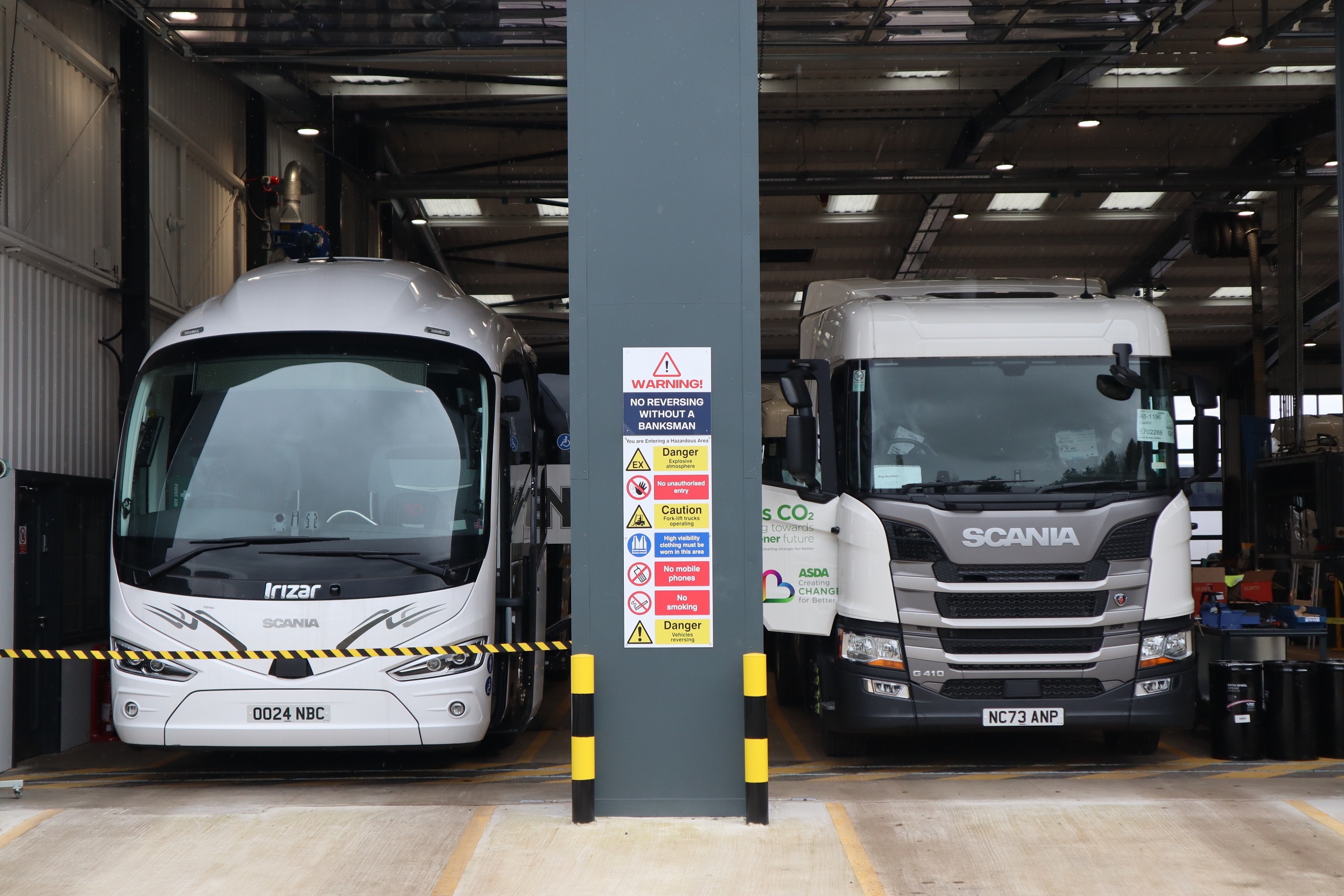
Core retail coach products for Scania UK are the Touring and Irizar ranges. Work with Caetano for National Express requirements is successful – and Mark says that Scania is committed to assisting the scheduled service provider with its zero-emission move – while collaboration with BASE Coach Sales on MOBIpeople product has delivered higher numbers than expected.
Ayats and Beulas are also in the picture. Ayats will take responsibility for coaches supplied under that arrangement and Beulas sales are handled by BASE. Neither are expected to deliver large volumes, but in double-deck and interdeck products, they give the Scania coach line-up significant breadth. Beulas bodies also come in standard format on Scania underframes.
The Touring has seen some change of late. It now has a full Scania dashboard in addition to earlier GSR elements and the wider cab area has been altered slightly. Trim has been amended and Steve Lambert reports that the model is seeing strong take-up.
“We had over 30 for 2024 and they are all gone,” he says. “We already have 40 on order for 2025 and some of those are sold. It is a versatile coach, from 10.9m to 13.7m, and when combined with Scania’s retail package that includes two years’ repair and maintenance, fleet management and other benefits, customers like it.”
On the Irizar relationship, all 30 i6S Efficient Treinta special editions have been sold. “We see Scania’s relationship with Irizar on coach getting closer in the coming years,” Mark explains. That includes on zero-emission among other aspects. “Irizar is very close to our head office in Sodertalje, and from a global product development standpoint, we can work with that.”
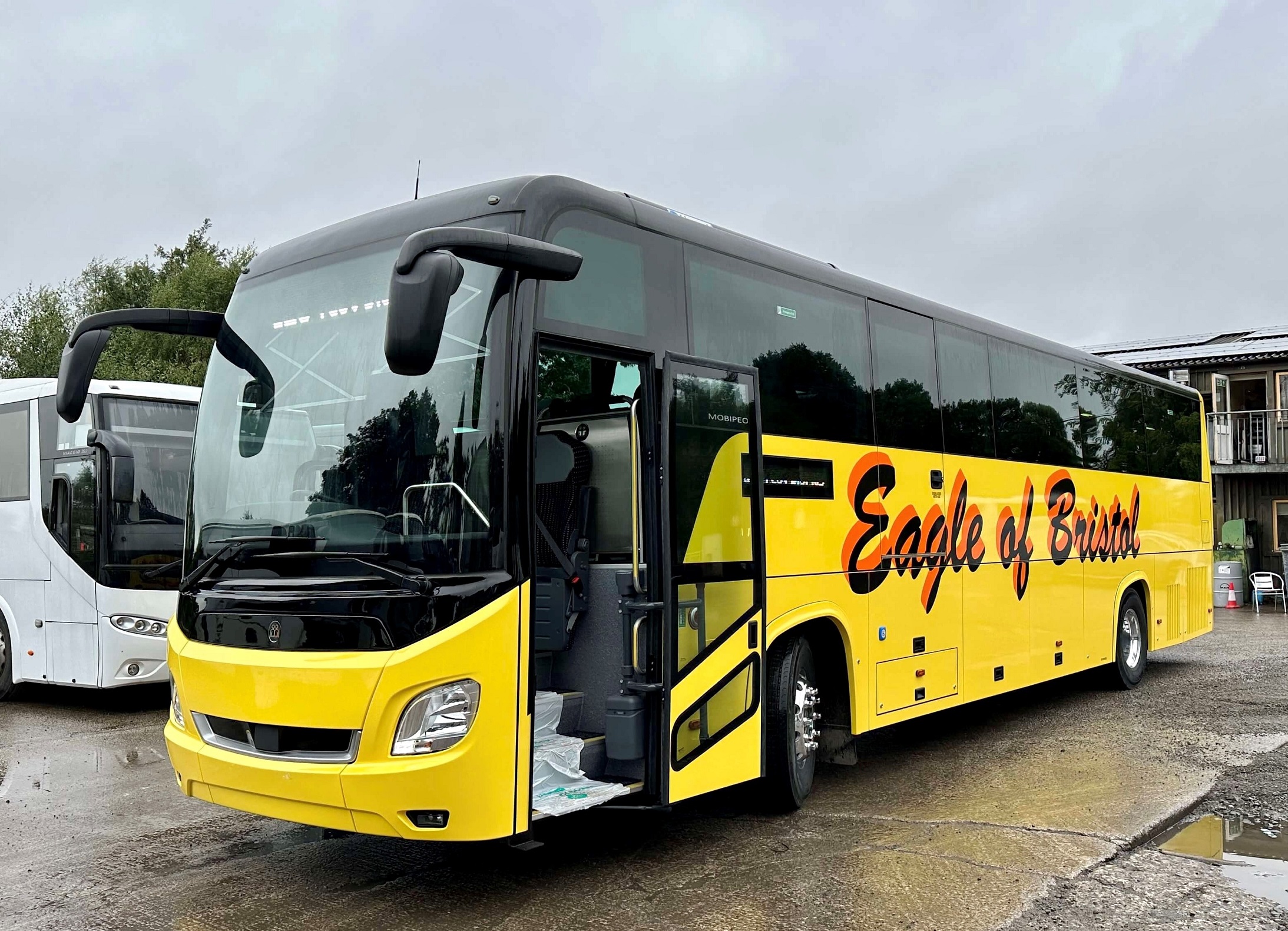
Zero-emission coming soon for single-deck bus
Dominating the bus portfolio for Scania UK is the Fencer. Its diesel single-deck form will continue, but key to future volume is battery-electric. Scania will only meet that demand in single-deck. Double-deck requires a low-floor chassis, and that core layout will go no further than its current iteration via a decision from Sweden to proceed only with low-entry for the European bus market.
That represents a major change and followed significant discussion, says Mark. Options were explored around third-party drivetrain components to permit a low-floor chassis for battery-electric double-deck, but that would breach the favoured Scania position on vertical integration. While it reverses an earlier position that a double-deck, battery-electric Fencer would be developed, the resulting clarity is beneficial, says Mark.
“When a customer buys a Scania chassis there is an expectation of what they will get. Our question was: ‘Could we mirror that if we purchase powertrain equipment from elsewhere?’”
He is confident that when battery-electric arrives in the Fencer, it will perform well. Northvolt battery cells will be packaged by Scania and use the vehicle OEM’s control systems. Energy density is seen as among their strengths, while a later generation of batteries is being spoken about by Scania’s truck division as having a benchmark lifetime of well over 1,000,000km.
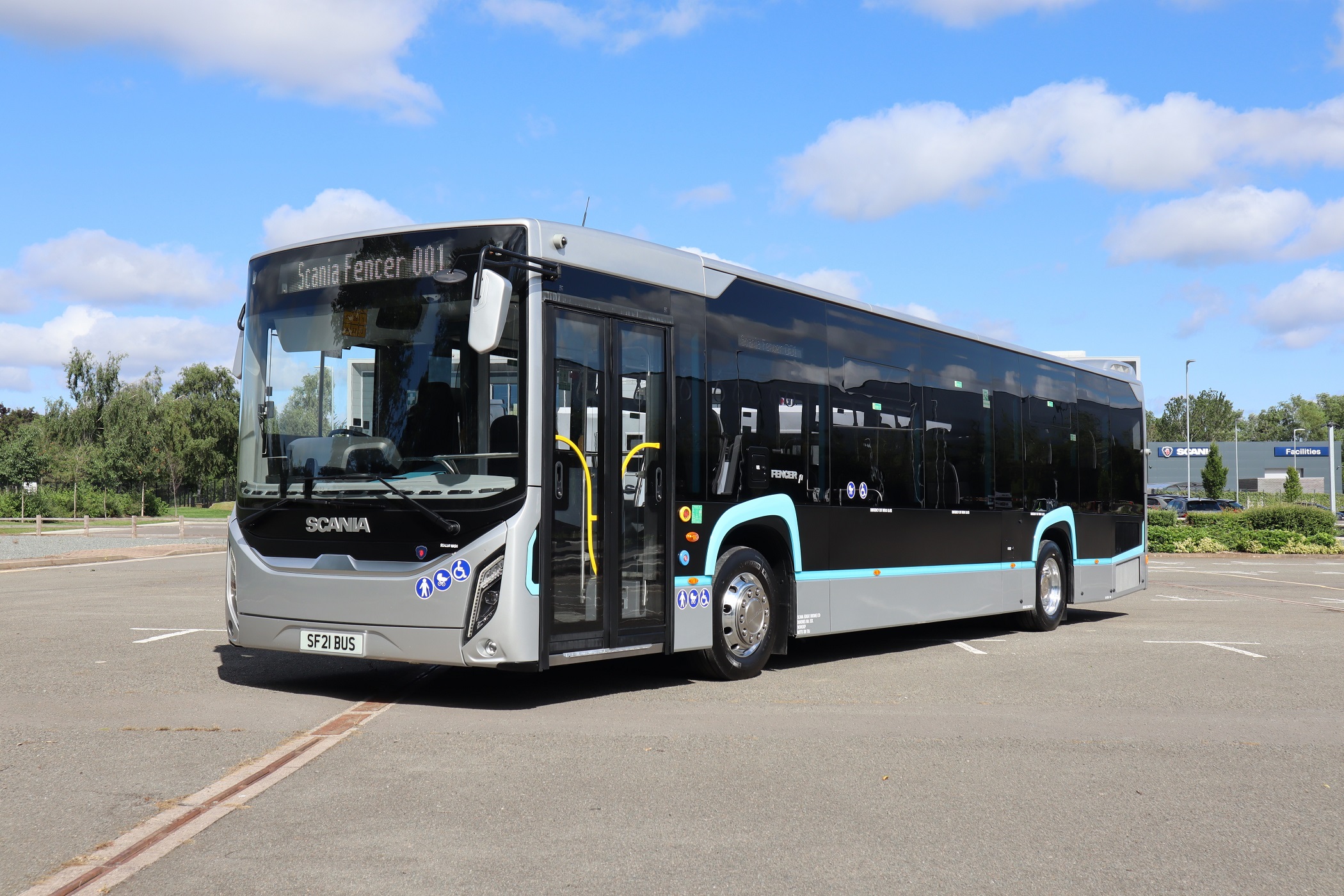
Focus on chassis gives scope for bus range expansion outside double-deck, he continues. “We are in discussion with other European bodybuilders for the UK market. The clarity we now have allows that. But we are not out simply to chase orders. It is a strategic, long-term approach. If someone takes our product, we must be there for the long haul.”
Diesel ‘has a long-term future’ for Scania vehicles
While much work is going into battery-electric, Scania sees a long-term future for diesel. Some global markets and applications will go zero-emission with great difficulty. “The future will be a technology blend. Part of that will be diesel,” says Mark. Like other European OEMs, Scania does not favour Euro VII, with a preference for R&D spend to go on zero-emission.
Continuing relevance of diesel is illustrated by the Super engine platform. Already here in truck, Super will come to coach over the approaching 18 months. The 13-litre DC13 engine will make the shift first.
When coupled to other components, that unit in truck has delivered fuel consumption benefits of over 10%. Scania debuted its next-generation coach chassis in 2022 in readiness for the Super engine, Mark adds.
“When we talk about reducing CO2 for coach, our stance is that diesel will be there. We will continue developing those powertrains because there must be a commonsense approach. One customer’s vehicles can do 440,000km per year. With that in mind, we cannot say ‘OK, we are now focused on electric.’ We needed to develop a product roadmap around all our strengths and ensure that customers get the best from it.”
That strategy is now present and clear, Scania believes. Its wider forward-looking work also captures readiness of the service point network, but perhaps the biggest key to the UK coach and bus operation’s ‘fit for the future’ exercise is what happens behind the scenes. More will undoubtedly follow, but for now, a robust structure is in place that gives long-term clarity for Scania – and its customers.





















